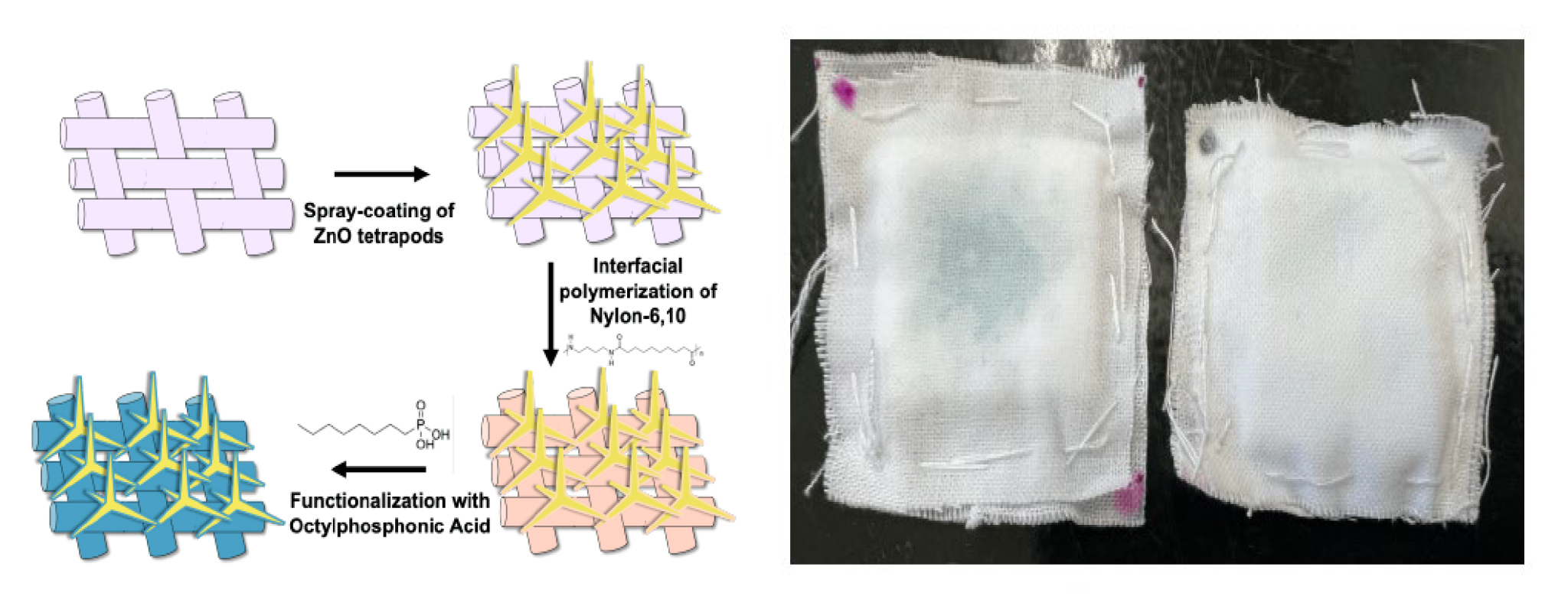
As a prolific inventor with a portfolio of licensed technologies including innovative battery materials, Dr. Sarbajit Banerjee exemplifies Texas A&M University’s commitment to leveraging innovation for a better world.
Banerjee, a Davidson Chair in Science and a professor in the Department of Chemistry as well as an affiliated faculty member in the Department of Materials Science and Engineering and the Texas A&M Energy Institute, is a leading expert in inorganic chemistry, solid-state physics and materials science who has made his fair share of groundbreaking research achievements since joining the Texas A&M faculty in 2014.
Take, for instance, one of his most recent projects that aims to develop tetrapodal-textured Janus textiles technology based on low-cost materials — pioneering work that offers accessible alternatives and applications in a variety of areas, from menstrual health to clean drinking water in low-income countries.
Inspiration Of Innovation
Banerjee's tetrapodal-textured Janus textiles, or tailored fabrics with dual functionality, are composed of a Janus fabric top layer inspired by the design of advanced filters and meshes used in oil-spill cleanup and separating water-oil emulsions in Canada's oil sands. The textiles build on his previous energy-related hydrophobic surfaces work in an expanded effort to provide potential and practical solutions in resource-scarce environments.

When it comes to the energy front, Banerjee's research is advancing in the field of energy storage with new improvements in lithium-ion battery technology. As published in Nature Materials, the pre-intercalation method he developed in collaboration with 2022 Texas A&M chemistry Ph.D. graduates Dr. Yuting Luo and Dr. Joseph Handy (now an assistant professor at Johns Hopkins University and at Intel, respectively) and current Ph.D. student John Ponis '22 as well as other students and colleagues at Dimien LLC and the Harish Chandra Institute in India focuses on a microscopic approach to alter the properties of materials. The resulting improvements the Banerjee Research Group has made in the performance, safety and sustainability of lithium-ion batteries are crucial in powering the next generation of portable electronic devices, electric vehicles, and home energy storage.
However, Banerjee’s approach to innovation goes beyond developing technologies for potential application. Rather, it is firmly rooted in his basic commitment to creating solutions that contribute to a more sustainable and equitable world.
“I believe in the power of science and technology to solve the challenges we face today and to improve the quality of life for future generations,” he says.
Future Frontiers
When asked what excites him about the future of innovation, Banerjee paints a picture of a world on the cusp of remarkable change.
“We are entering a world full of possibilities enabled by the availability of AI tools to accelerate innovation, instrumentation that is helping us understand processes at the levels of atoms and electrons, and a new dawn of manufacturing that offers unprecedented diversity of scale and design,” he explains.
Banerjee is particularly inspired by the passion of young people globally, including his students at Texas A&M.
“I am inspired by the passion that young people across the world — including our Aggies — have for leaving the world a better place and for being willing to step up to address the defining challenges of our generation in energy, sustainability and access,” he adds.
Driving Change In Sustainable Materials
Looking ahead, Banerjee has set ambitious goals for the next five years. He recognizes the critical need for financial resources to tackle significant global challenges and aims to bridge the gap between innovation and capital.
“One of the challenges inventors and innovators face is connecting to capital and ensuring that we have the financial wherewithal we need to work on big challenges,” he notes.
I am inspired by the passion that young people across the world — including our Aggies — have for leaving the world a better place and for being willing to step up to address the defining challenges of our generation in energy, sustainability and access.
He plans to focus his research on sustainable materials supply chains, a crucial area for the ongoing energy transition. In addition, he is dedicated to finding ways to harvest critical materials from unconventional reserves and to develop methods for recycling and upcycling materials in order to reduce dependency on finite resources.
“I am particularly concerned about and interested in working on sustainable materials supply chains because we have a lot riding on this for the energy transition,” he adds.
Beyond his research, Banerjee is passionate about mentoring the next generation of innovators.
“I am interested in training the next generation of entrepreneurs to go out and work on important problems,” he says, underscoring his commitment to fostering a culture of innovation that is not only scientifically advanced but also socially conscious.
His work with tetrapodal textured Janus textiles and lithium-ion batteries embodies this philosophy. Both technologies are designed with a focus on sustainability, from the materials used in their creation to their potential impacts on the environment and society. By optimizing performance while minimizing resource consumption and waste, Banerjee continues to set new standards in sustainable innovation.
This story was originally published by Texas A&M Innovation.
About Texas A&M Innovation
Texas A&M Innovation promotes an innovative and entrepreneurial culture among Texas A&M’s research community using a rigorous process to guide projects from new innovations through market commercialization. We encourage industry partnerships, support startups and entrepreneurial commercialization, and make connections to mentors, funding and other critical resources to accelerate commercialization of Texas A&M University System intellectual property. Through our work, we strive to promote regional economic development and ultimately impact the lives of people locally, nationally and globally. Learn more about the Texas A&M Innovation technology portfolio.

